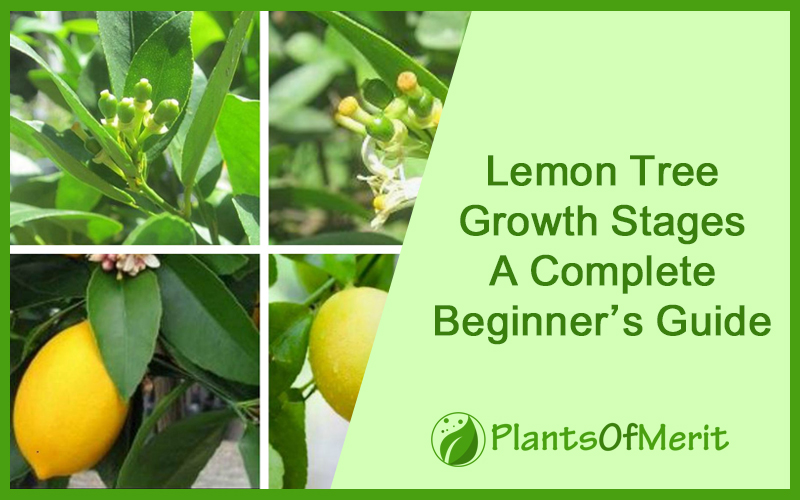Who doesn’t love lemons, right? They are versatile, easily accessible, very flavorful and fresh, and are compatible with just about any dish you can think of. But, what’s great about lemon trees is growing them without any issues.
Not just in your garden, with the right environmental parameters, it is possible to grow lemon trees indoors as well. That’s how versatile things are. However, despite the ease, there are certain complications you need to be aware of.
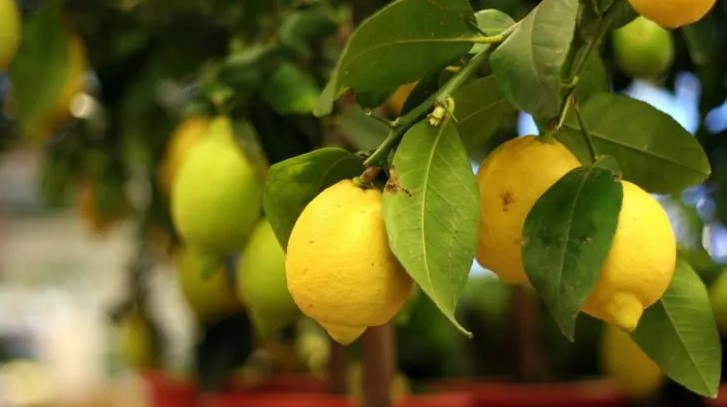
Lemon trees don’t have a very long growing season, so things will be quite fast-paced. It is perfect for people who don’t enjoy waiting around things. When it comes to the individual lemon tree growth stages, there are seven that we should be familiar with.
This article will walk you through every single one of them, enabling you to make the most of your gardening experience throughout.
What are the Growing Stages of a Lemon Tree?
As we just highlighted, a lemon tree has seven growth stages that you need to know. Every stage is crucial to its outcome, which is bearing the lemons on the branches.
Like most other plants and trees, even lemon trees grow from a seed, which you need to prep and then plant to kickstart the process.
With all the optimal growing conditions, it shouldn’t take your lemon plant long before it starts bearing the fruits on it. The process is fairly simple, especially if you are growing the plant with the intent to harvest the fruits.
Let us walk you through the various growing stages of a lemon tree in detail:
Stage 1 – Germination
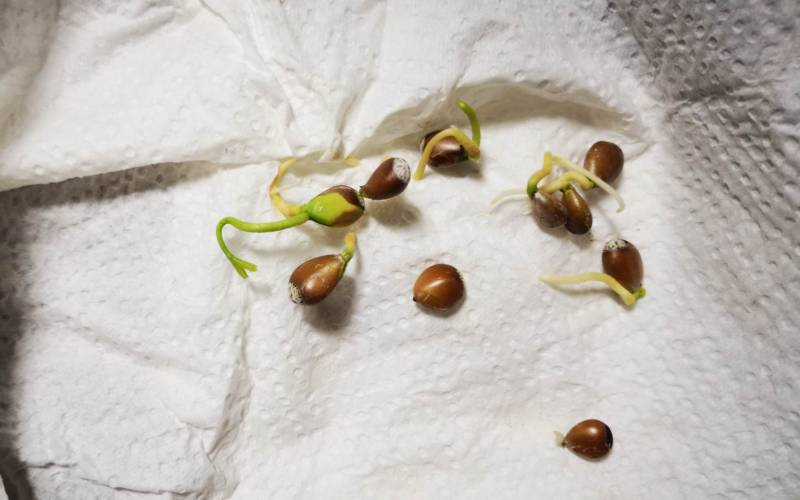
The first and potentially most important growth stage of a lemon tree is the germination process. Since you need to grow a lemon tree from the small and creamy white-colored seeds, paying attention to the seed preparation process is essential.
What’s great about lemon seeds is that you don’t have to do much. You can dig around some soil, put them into the soil, water them evenly and let it germinate for the next 5-7 days.
During this first week is when the majority of the growth happens. You need to ensure that the plant is growing optimally, especially because during this period is when the lemon tree develops its roots and also the leaves sprouting out of it.
Stage 2 – Young Seedling Stage
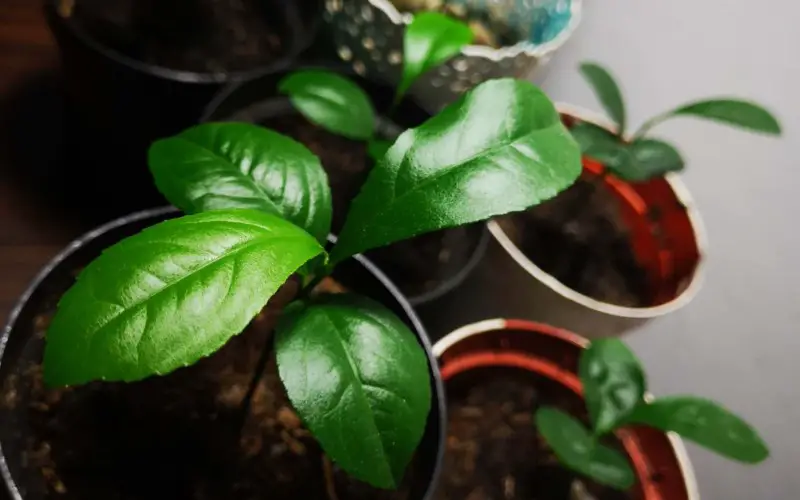
Following successful germination, you should find small sprouts or buds coming out of the soil. This indicates that your lemon tree has germinated successfully from the seed and has developed a strong rooting system underground.
Your next step is to nurture the seedling because that’s what produces more leaves and eventually the fruits. Unlike the germination process, which is quite resilient and hard to mess up, the second stage is where things take a turn for the worse.
The small seedling is very delicate during this stage, which means that you have to be extra careful about how you handle things. You can’t afford to overwater the plant or underwater it. You can’t overfertilize it or leave it without any care, thinking it will grow by itself.
Instead, you have to pay close attention to the requirements of the plant at this stage. If you are growing the lemon tree during the peak summer months, be assured that you’d need to add water quite frequently. So, keep an eye out. Also, lemon trees are dependent on direct sunlight, so plan things accordingly.
Stage 3 – Youth
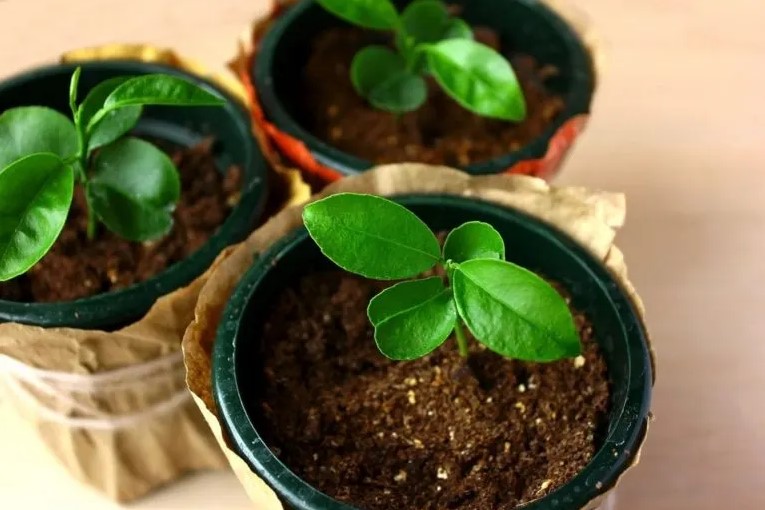
The young seedling keeps on growing and maturing, turning into a sapling. You will notice more and more leaves sprouting out of the branches, which is a sign that your plant is growing optimally and without any complaints at all.
During this period, you need to pay close attention to the cold weather too. The last thing you want is to mess things up for the progress because the weather got too cold.
If you want to provide the best care for the plant, focus on the sunlight and moisture. Prolonged and direct sunlight is a must for lemon trees to grow without any inhibition. Also, overwatering is very common with lemon trees, especially during this stage. So, stay mindful that you aren’t doing the same.
Although lemon trees don’t survive in frost, they can sustain themselves to an extent in cold weather conditions. However, we’d not recommend that you leave your plant without any supervision in such cases.
Stage 4 – Flowering and Fruiting

With the kind of hard work you have put into growing the tree from a seed is commendable because lemon trees typically require around two years before they start flowering and fruiting.
So, it is a test of your patience. By the two-year mark, that’s when you will start noticing the buds appearing on the tree. It typically happens during the winter months. However, as the seasons change and we step into spring, that’s when the plant starts flowering.
It is during the peak summer months that the lemon tree is filled with white flowers, covering the entirety of it. Also, lemon trees are self-pollinating, which means that they are self-sufficient and don’t need any kind of external help to bear fruits.
But, one thing that is essential during this phase is to water the plant optimally. If you want your lemon tree to bear juicy and fresh lemons, watering them right makes all the difference. Also, if you are growing a lemon tree indoors in a container, always use one with holes for water drainage.
Stage 5 – Ripening
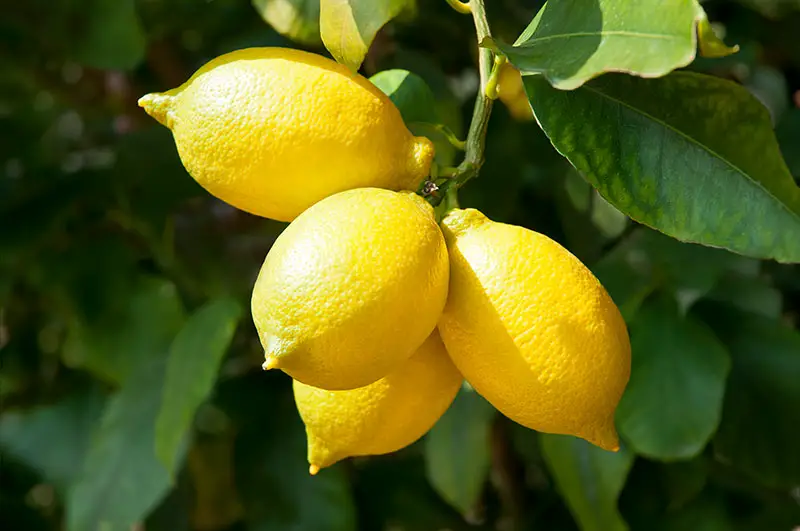
Another important phase in the growth stage is ripening. It usually takes 3-4 months for the lemon tree to mature, which means that you need to pay close attention to all the growing parameters during this particular period.
From optimal watering to using the right amount of fertilizers, you do need to prioritize things every step of the way. Also, lemon trees are very prone to infections. If you start noticing the leaves curling or turning brown or yellow around the edges, it could be a sign of pest infestation.
Use organic and high-quality pesticides in that case. Once the lemons are ready to be harvested, you can snip them off the branches and use them in any way you need in your cooking or other work.
Stage 6 – Harvesting

Following two years of the long wait, your lemons are finally ready to be harvested. The perfect way to decide whether or not the lemons are ready to be harvested is by checking the color of the lemon skin.
Ideally, you want to ensure that they are bright yellow and not green on the exterior. Lemons are supposed to have an oblong shape and be yellow. If you harvest them when they are green or very small in size, it will prevent further maturation of the fruit.
Harvesting the lemon before complete growth and development might make the lemons taste very bitter instead of sour.
Stage 7 – Drying
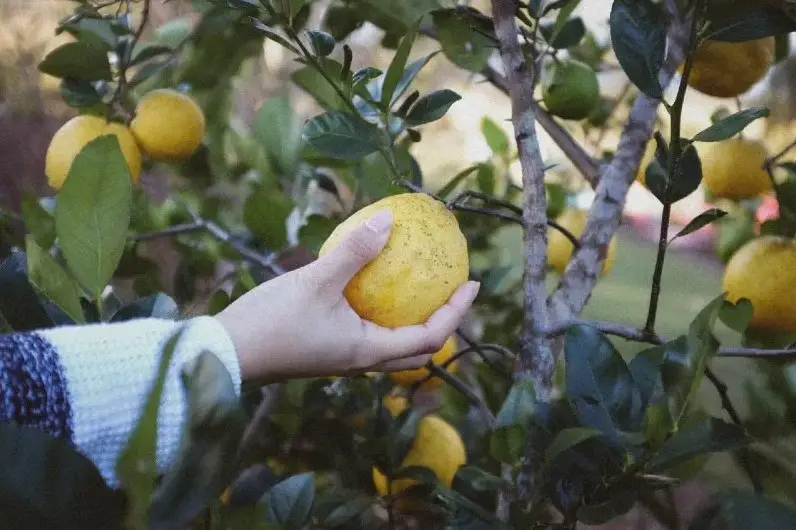
If you aren’t a big fan of lemon and don’t plan on harvesting the fruits, chances are that they will eventually dry out and turn brown. Over time, as the lemon dries out, it loses its weight and falls off the branch to the ground.
What’s great about lemon trees is that they bear fruits until old age. So, once you have planted one in your garden, you are pretty much set for life. You can collect the seeds and plant more around them as well.
These are the seven stages of lemon growth. Despite the long duration, growing lemons is well worth the wait, which means that your hard work isn’t going to go to waste.
Factors to Consider when Growing a Lemon Tree
Now that you are familiar with all the important growth stages of a lemon tree, let us redirect our focus to the influencing factors or parameters.
To ensure that your lemon tree is producing top-notch quality lemons, you need to keep a check on all these factors.
1. Location
Lemon trees require direct sunlight during the peak growth period, which means that you have to be mindful of the location. You can’t plant this tree besides larger trees that will shade the tree and block sunlight.
So, before you plant the seeds, find the spot in your garden that receives prolonged and direct sunlight. Once you do, that’s where you can plant the seeds and let the lemon tree grow without any limitations.
2. Soil requirement
Lemon trees need well-draining and loamy soil because of the high levels of water it requires. If you don’t plant it somewhere with well-draining soil, it will stagnate the water, leading to a potential root rot, which is likely the last thing you need.
Also, maintaining the pH of the soil is important. Ideally, you need to ensure it’s between 5.5 to 6.5, which is slightly acidic.
3. Watering
As we discussed in a previous section of the article, lemon trees need excessive watering. The newly planted lemon trees need regular watering and optimal quantity. You don’t want to overdo things at all.
During the initial stages of growth, especially during the germination and sapling stages, you need to water the plant at least twice a week.
Once the tree has grown and matured and has started to bear fruits, that’s when you can take things easy on yourself because it doesn’t require frequent watering anymore. Also, avoid watering during the rainy season.
Another watering requirement to be mindful of is the technique of spraying the water. You don’t want to do things haphazardly. Always point the water can’s nozzle towards the soil and water the roots. Avoid splashing the water on the leaves, especially in humid weather conditions. This can lead to a barrage of diseases.
4. Fertilizer
Another must-have that you can’t miss out on is fertilizer. The lemon trees require a good dose of fertilizer and frequent intervals to ensure optimal growth.
You can stick with organic fertilizers since they work the best. Also, the 6-6-6 blend works immaculately, so that’s another factor you need to be mindful of. You need to apply this fertilizer every 3 months for the best result.
However, once the lemon tree is fully developed and mature and has born fruits for a few years, you can fertilize the soil every 2-3 years and that should be more than enough. During this period, it is very common to overdo things, so avoid overfertilizing.
Is Growing a Lemon Tree Beginner-Friendly?
Amidst all the fruit-bearing trees that we know of, growing lemon trees is potentially the easiest of them all. The only hard part of the process is patience.
You do have to wait for over two years before you can start noticing the fruits on the tree, so that could be a breaking point for some growers.
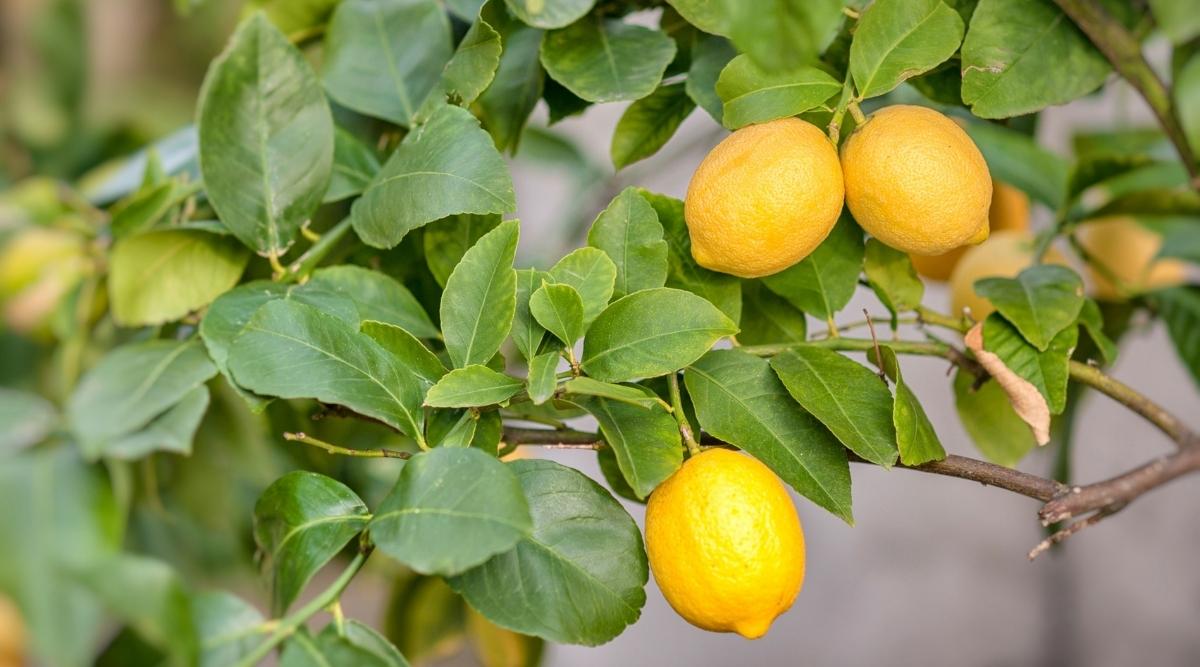
Besides that, the plant doesn’t involve any kinds of complicated steps or doesn’t require a lot of manual labor, which is always appreciated as well. So, if you are getting into gardening and want to start with an easy project, growing a lemon tree is the best one.
Also, another reason why it is beginner-friendly is because of how cost-effective it is. You can grow it outdoors or indoors and you can grow it from a small seed. It is quite resilient, so you don’t have to go out of your way to change things in your surroundings.
The only work you need to put in is being vigilant. You don’t want things to get complicated, especially with the time you put into growing this.
Conclusion
Lemon trees are versatile, easy to grow and one of the only fruit trees that can bear fruit for years down the line, once they are mature. If you are planning to grow one in your backyard but don’t have a lot of ideas how to get started, we hope this article gives you all the insights.

